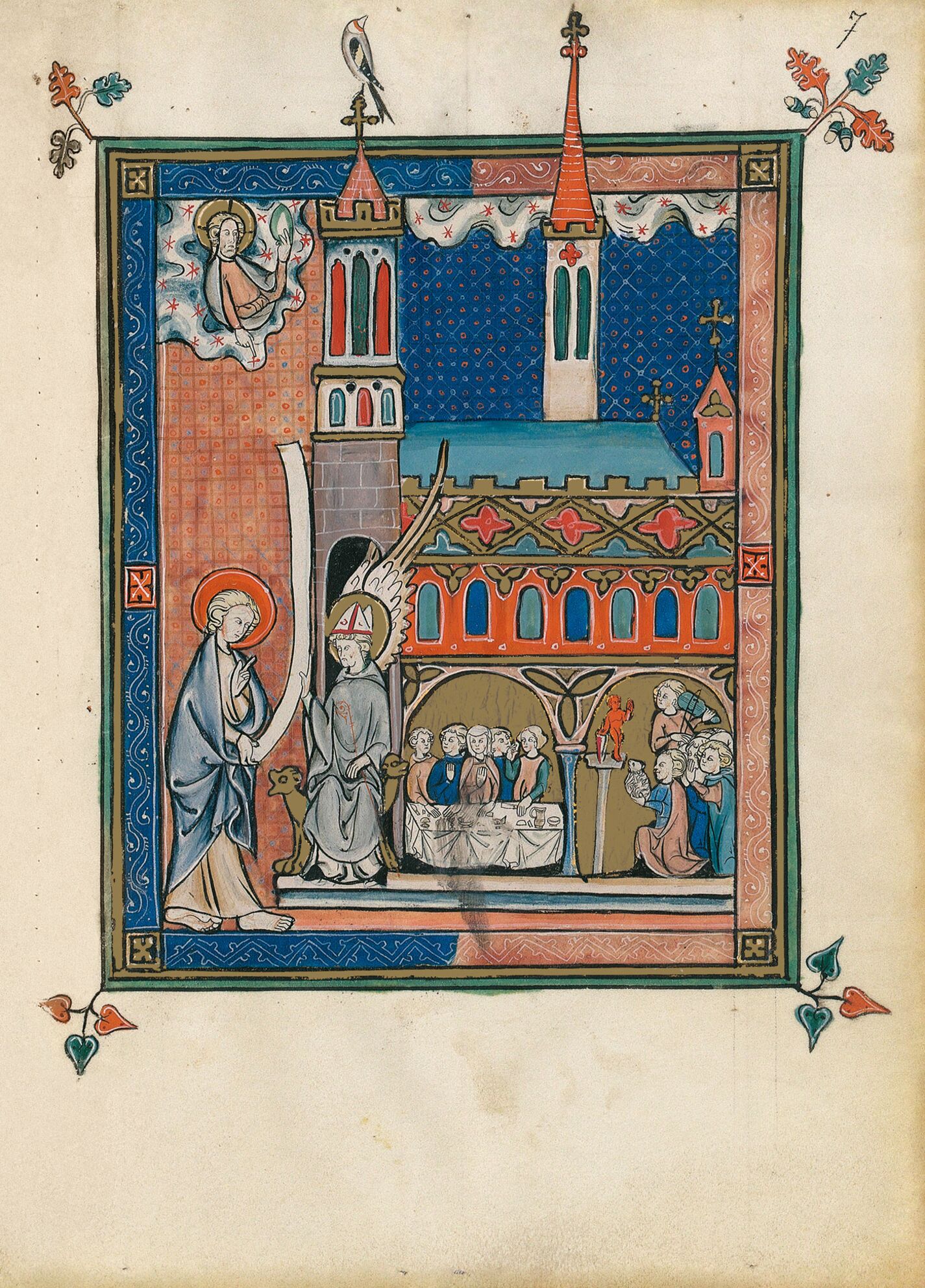The bishop angel sits upon an episcopal throne in the form of a curule chair. He accepts the phylactery symbolising the message John must convey to him and in which Christ congratulates the community leader about the loyalty to his name during a trial when a certain Antipas lost his life for bearing witness to his faith. However, this ancient tradition is not mentioned by the commentator, who considered the man to be the bishop of Pergamus martyred by Domitian.
Pergamus is not, however, without the wickedness alluded to in the elegant church representing the Christian community. The roof of this two-storey building features a gold, crenellated parapet adorned with openwork in the form of quatrefoil oculi. The Gothic towers are crowned by golden crosses, and a goldfinch in the marginalia perches upon the cross on the entrance tower. The nave is divided into two wide arcatures. Inside the one on the right is a scene of pagan worship showing people on their knees offering up a lamb to an idol, a statuette of a classical-style nude holding a spear and leaning upon a shield, whilst a musician accompanies the ceremony on his viol. Depicted beneath the arcature on the left are five diners at a courtly banquet in the course of which the victim’s flesh is apparently eaten. The illustration shows the heretical practices of the Nicolaites, mentioned earlier in the message to the Church of Smyrna, and the customs of the followers of Balaam. This greedy prophet, whose tale is told in the Book of Numbers (Num. 22-23), was bribed by Balac to curse the sons of Israel that this Moabite king was at war with and incite them to prostitute themselves, i.e. in the biblical context of idolatry, to eat the meat sacrificed to the gods.
A heavenly award awaits those who do not fall prey to paganism. God emerges from the starry clouds clearly holding an oval, opalescent stone in his hand: the mysterious white pebble upon which a new name “known to no other than he who receives it” will be engraved.
Marie-Thérèse Gousset and Marianne Besseyre
Illuminated Manuscripts Research Center, Bibliothèque nationale de France
Fragment of the Apocalypse of 1313 commentary volume
